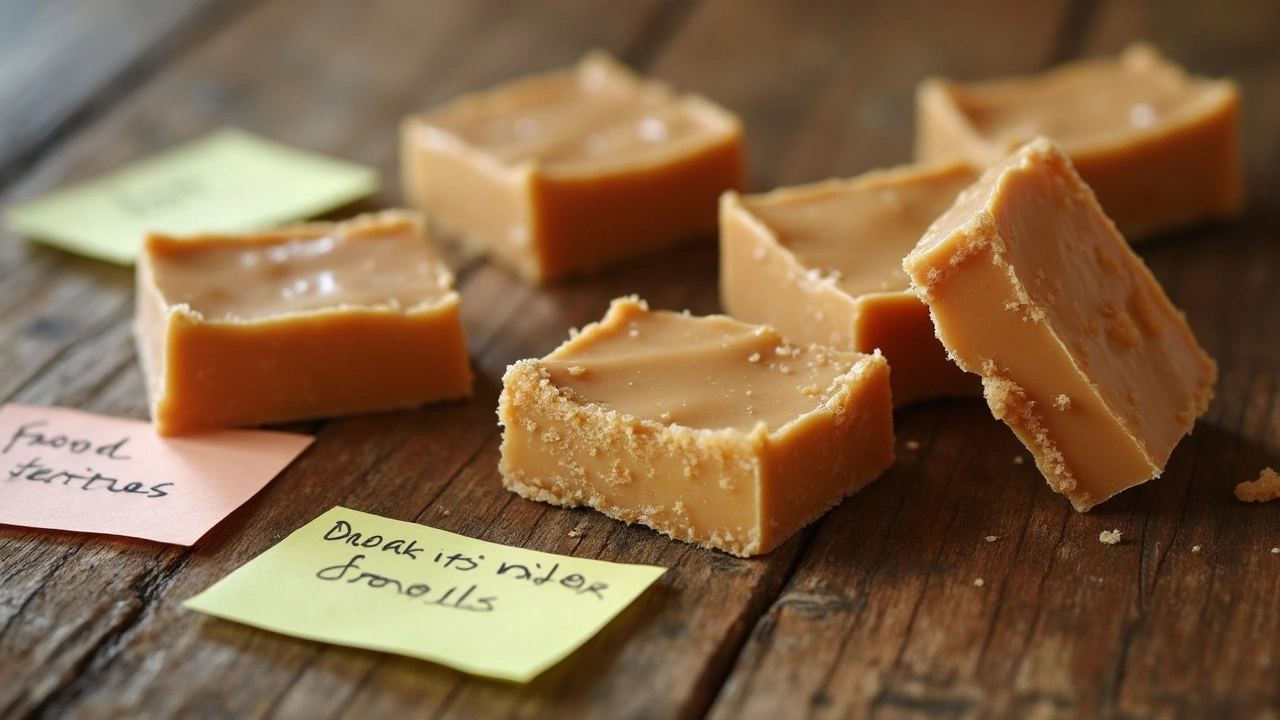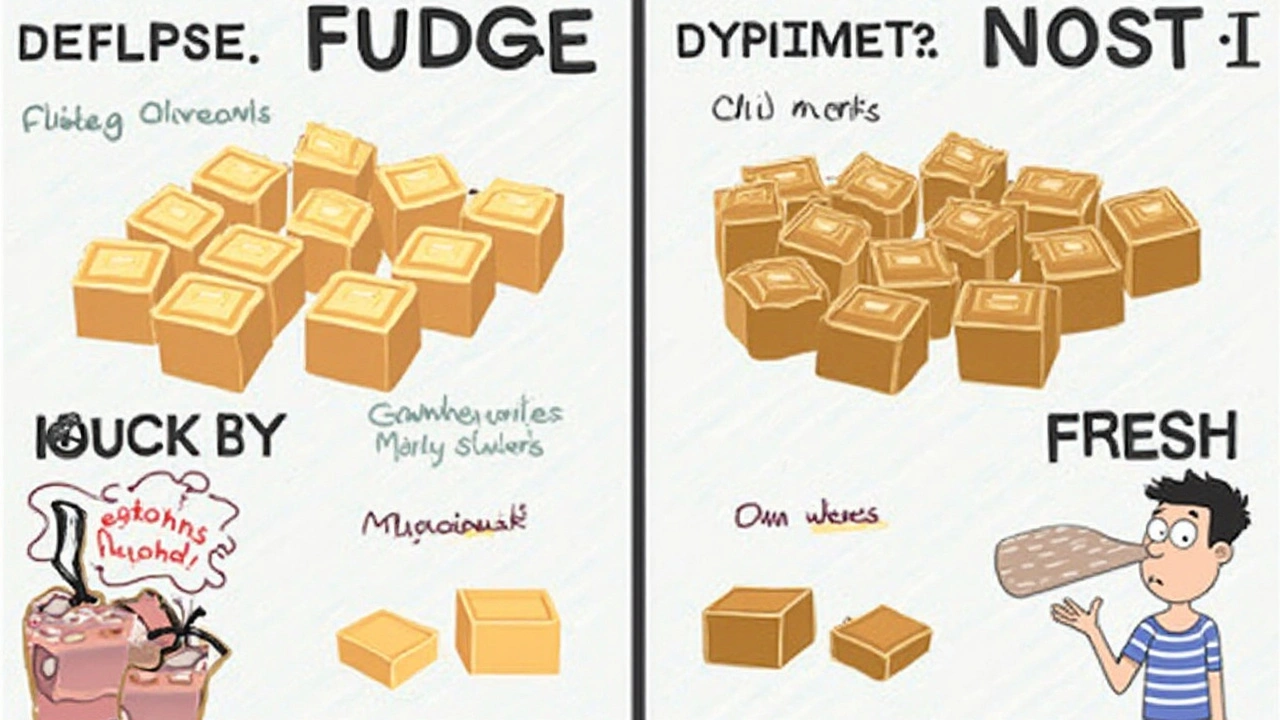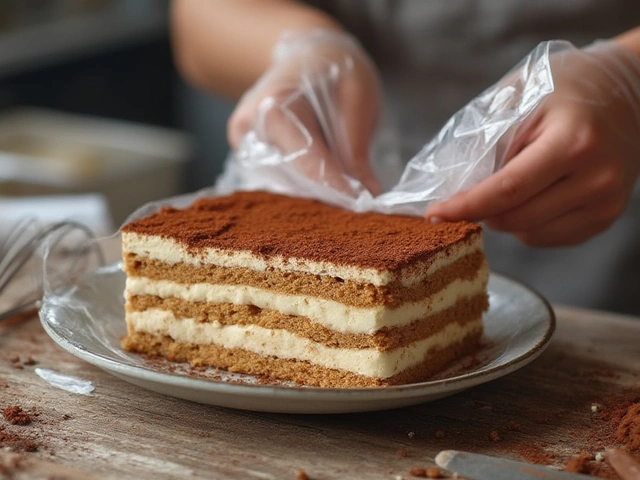
Picture this: it’s Saturday night, the house is quiet, the kids have crashed, and you’re eyeing the fudge tucked away in the back of your pantry. The problem? You don’t have a clue how long it’s been sitting there. You flip the box a couple of times, sniff it, break off a piece—now you’re stuck in fudge limbo, wondering if the risk is worth it. So how do you actually tell if fudge is bad? Most people assume fudge lasts forever. But that silky, sugary slab is not immune to age, air, or your kids’ sticky fingers. Spoiled fudge can surprise you with subtle changes first, and then go full Dr. Jekyll if you’re not watching.
Common Signs Your Fudge Has Spoiled
First things first, fudge does have a shelf life—even with all that sugar. It’s a myth that sweet treats last forever. The average homemade fudge lasts two weeks at room temperature, maybe a month in the fridge, and up to three months in the freezer. But not all fudge is made equal; store-bought ones stuffed with preservatives will keep much longer. Either way, the signs of bad fudge sneak up on you if you’re not careful.
The number one clue? Texture. Fresh fudge feels smooth, a bit dense, and pleasantly soft when you press it. Old fudge shrivels, dries out, and may even crack. Pick up a piece; if it snaps into pieces or seems crumbly like stale bread, that's strike one. Ever pulled fudge and noticed oil beads forming or it feels greasy rather than silky? That’s the cocoa butter deciding to escape, a sign oxidation is at work. The once smooth surface may look matte, darkened, or show white spots—sometimes called "sugar bloom." Sugar bloom itself isn’t dangerous but shows the fudge wasn’t stored right.
Next, pay attention to color changes. Fudge is usually glossy brown, deep chocolate, or creamy beige, depending on flavor. Any shift towards gray, green, or even a bluish mold hue means it’s game over. Mold doesn’t always show on the outside at first, so break it open and scan the middle. Sometimes fudge spoils from the inside out, especially if moisture sneaks in. If you spot fuzzy bits or odd streaks, especially near nuts or fruit chunks buried inside, toss it.
The smell test never fails either. Good fudge smells sweet, buttery, or nutty depending on the recipe. If you catch any hint of sourness, alcohol, must, or an “off” tang, don’t risk it. Fudge can harbor bacteria, especially if it’s got dairy, so don’t ignore bad smells. When in doubt, trust your nose before you let your taste buds betray you. I once sniffed what looked like decent fudge in a pretty box only to nearly gag from the rotten smell coming out. Glad I trusted my nose instead of my eyes.
Now—taste is the final (and riskiest) checkpoint. Don’t treat it as a free pass. If you ignored sketchy smells or odd textures, and that first crumb tastes weird, bitter, or reminds you of old milk, spit it out! Safe fudge tastes sweet, maybe rich or buttery, depending on ingredients—never tangy, funny, or metallic. A friend’s uncle once tried "aged" fudge at a family picnic, ignored the warning signs, and, well, let's just say the rest of the night didn’t go as planned.

What Makes Fudge Go Bad?
It’s easy to forget that fudge is basically a science experiment—sugar, butter, dairy, and sometimes even eggs, all living together in perfect harmony. But that harmony doesn’t last forever. If you think sugar alone can handle all the preservation, think again. The villain here is usually moisture. The more moisture in the air, or in your fudge, the faster it turns. Humid environments suck: fudge will get sticky, melt slightly, and basically become a paradise for bacteria and mold. Pantry fudge sitting next to an open window in July? That’s asking for trouble.
Let’s talk about ingredients. If your fudge is loaded with cream or condensed milk, it’s more fragile compared to versions that are heavy on chocolate and sugar. And fudge stuffed with extras like marshmallow, fruits, or nuts—they rot or mold faster than the base does! Ever forgot about a leftover slice of fudge with walnuts? Those nuts go rancid first and can turn the whole block before the rest even has a chance. There’s even a word for this: "protein spoilage." Anytime there’s dairy or nuts, check them first.
The container matters just as much as the recipe. Wrap fudge poorly and oxygen gets in, turning your silky treat into something that tastes like cardboard. Air-tight containers really are worth it. Forget cling-wrap loose on a plate—use plastic wrap and stash it in a sealed container. Even better: if your kitchen gets warm, keep fudge in the fridge. Excessive light spoils fudge too by breaking down fats. If grandma kept hers in a cookie tin, she was onto something.
What about freezing? Fudge fans always argue about this one. Freezer storage is fine—but only if you double-wrap it. Air sneaks in, even in the freezer, so a single freezer bag isn’t enough. Use wax paper and then a zip bag, or, if you're like me, scavenge a leftover plastic container. Just thaw it slowly in the fridge to avoid condensation ruining the texture.
Don’t mix flavors when storing. Strongly-flavored fudge, like peppermint or orange, can seep their flavors into more mild pieces. Nobody wants their chocolate fudge suddenly tasting like toothpaste. I learned this the hard way one holiday—one big box, one weird taste party. Separate them if you can, especially if you’re storing fudge for a while.

Best Practices to Keep Fudge Fresh (and Safe!)
If you want to avoid the heartbreak of wasted fudge (or a night running to your bathroom), storing fudge properly is the best move. Here’s what actually works, tried and true—even when your kids (hi Dariel, hi Thalia!) forget to seal things properly.
- Cut fudge into smaller chunks before storing—less exposure to air, and it's easier to check for spoilage.
- Always use an airtight container. Old-fashioned cookie tins, glass containers with rubber seals, or even multiple zip-top bags get the job done. Extra points if it keeps out light.
- Line the storage container with wax paper or parchment paper to prevent any sticking. Trust me, cleaning dried fudge off Tupperware is not fun.
- If you’re keeping fudge out at room temperature, pick the coolest, driest shelf in your pantry. Avoid above the stove, it gets steamy there.
- In humid climates, put your fudge in the fridge. Let it come to room temperature before serving for the best texture.
- Freezing is fine if it’s double-wrapped, as mentioned before. Label it with the date—trust me, you’ll forget a month from now.
- Never store different flavors together unless you want one fudge to taste like another.
- Check fudge before eating—sight, smell, then, if all else fails, a tiny taste test.
- Don’t try to “save” fudge with a little mold. It’s not like bread, cutting mold off won’t make it safe. The spores can run deeper.
- If fudge gets sticky or syrupy on the outside, even if it smells OK, toss it. That means the sugar is breaking down and the texture will never be right again.
One last thing: store-bought fudge often includes preservatives, so always check the “best by” date if you’re unsure. But don’t take it for gospel—the second you see separation, weird oil slicks, or white patches that weren’t there before, it’s time to say goodbye.
You don’t have to be a food scientist, but recognizing bad fudge takes a little attention to detail. If your fudge has lost its luster and smells weird, just move on. The payoff is sweeter than risking your gut for one more bite. Next time you find a lost tray of fudge, you’ll know exactly what to look (and smell, and feel) for—no guessing games, no regrets. And yes, keep a secret stash, out of reach of little hands, for “inspection purposes.”





